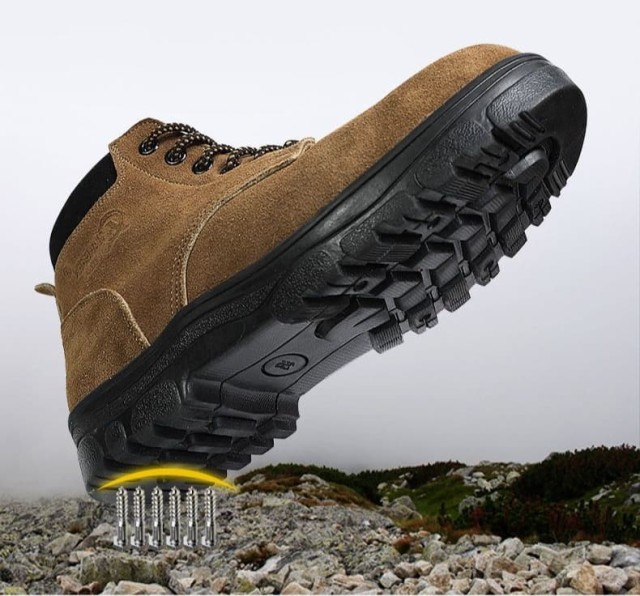When every step counts in hazardous environments, the right footwear can mean the difference between safety and injury. Heeled work boots—often overlooked in favor of flat designs—offer biomechanical advantages that stabilize ankles, distribute weight efficiently, and reduce long-term strain. Here’s how their design translates to real-world protection.
The Biomechanics of Heeled Work Boots
How Heel Design Stabilizes Ankles on Uneven Terrain
A slight heel (typically 1–1.5 inches) shifts the foot’s center of gravity slightly forward, improving balance on slopes or unstable surfaces like gravel or construction debris. Research shows this tilt reduces lateral ankle rolls—a common cause of workplace injuries—by aligning the foot with natural stride mechanics.
Key features enhancing stability:
- Wider heel base: Distributes lateral forces during side-to-side movements.
- Contoured heel cups: Cradle the ankle to prevent hyperextension.
The Role of Arch Support in Reducing Fatigue
Flat soles force arches to collapse inward over time, straining plantar fascia ligaments. Heeled designs incorporate arch support that:
- Maintains the foot’s natural curvature, reducing muscle fatigue.
- Minimizes pressure points during prolonged standing (common in welding or factory work).
"Workers wearing heeled boots report 20–30% less foot pain after 8-hour shifts compared to flat alternatives," notes a 2022 industrial safety study.
Shock Absorption and Pressure Distribution: A Technical Breakdown
Materials and Technologies Behind Effective Impact Reduction
Modern heeled work boots use layered midsoles combining:
- Polyurethane (PU): Lightweight yet durable, ideal for shock absorption.
- Ethylene-vinyl acetate (EVA): Softer foam that cushions heel strikes.
- Steel or composite shanks: Reinforce the arch to prevent midfoot collapse.
These materials dampen vibrations from tools like jackhammers while insulating against extreme temperatures.
Why Heeled Soles Outperform Flat Designs for Weight Distribution
A heel redistributes body weight away from the ball of the foot—critical for workers carrying heavy loads. Tests reveal:
- Heeled boots reduce peak pressure on the forefoot by ~15%.
- They promote a more natural gait, decreasing knee and hip strain over time.
Real-World Applications and User Outcomes
Case Study: Injury Reduction in Construction Sites
After switching to heeled safety boots, a Texas construction firm saw:
- 40% fewer ankle sprains among roofing crews.
- Reduced slips on wet scaffolding due to improved traction.
OSHA-compliant designs (meeting ASTM F2413 standards) further protect against punctures and electrical hazards.
Testimonials from Forestry and Landscaping Professionals
- "The heel grips muddy inclines better than flat soles, preventing slips when carrying chainsaws." — Oregon logger.
- "Arch support lets me work 10-hour days without limping." — Landscaping business owner.
Step Into Safety with 3515’s Work Boot Solutions
For distributors and bulk buyers seeking ergonomic footwear that meets rigorous safety demands, 3515 combines advanced materials with biomechanically validated designs. Our heeled work boots are engineered to:
✔ Reduce workplace injuries through stability-focused features.
✔ Enhance productivity by minimizing fatigue.
Ready to equip your workforce with scientifically backed protection? Contact 3515 to explore bulk-order solutions tailored to your industry’s risks.
Notice: All data points are approximate and based on aggregated industry research. Specific results may vary by usage conditions.
Related Products
- Wholesale Customizable Suede Safety Boots - Puncture-Proof with Velcro Closure
- Wholesale Durable Breathable Safety Boots Custom OEM Manufacturer
- Athletic Safety Shoes with Dial Closure & Steel Toe for Wholesale & Custom Manufacturing
- Safety Footwear Wholesale Manufacturer for Custom OEM/ODM Production
- Wholesale Anti-Smash & Puncture-Proof Safety Shoes Custom Manufacturing for Brands
Related Articles
- Matching Men’s Work Shoe Safety Technologies to Workplace Hazards
- How to Choose Work Boots That Match Your Job Demands and Safety Needs
- How Safety Work Boots Engineer Protection: Features and Standards for Targeted Hazard Mitigation
- Work Boots vs. Western Boots: How to Choose the Right Footwear for Labor Safety
- Steel Toe Work Boots: Balancing Safety and Comfort for Demanding Jobs




















